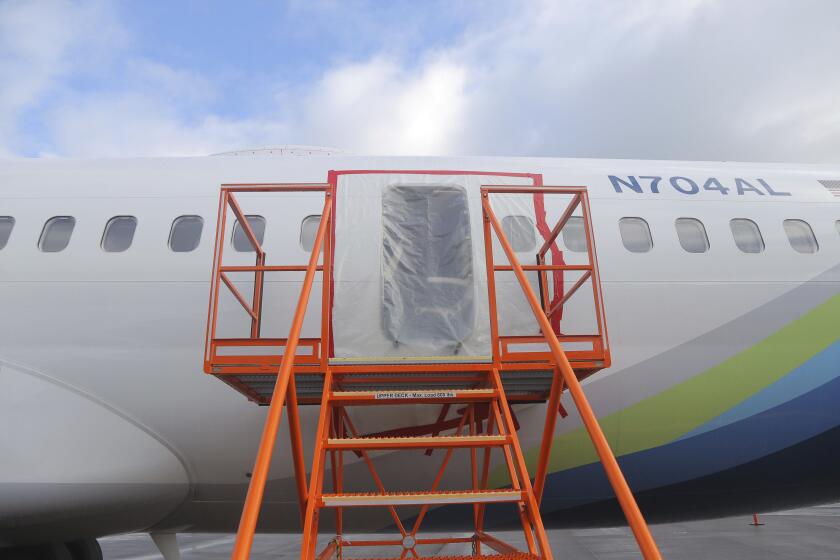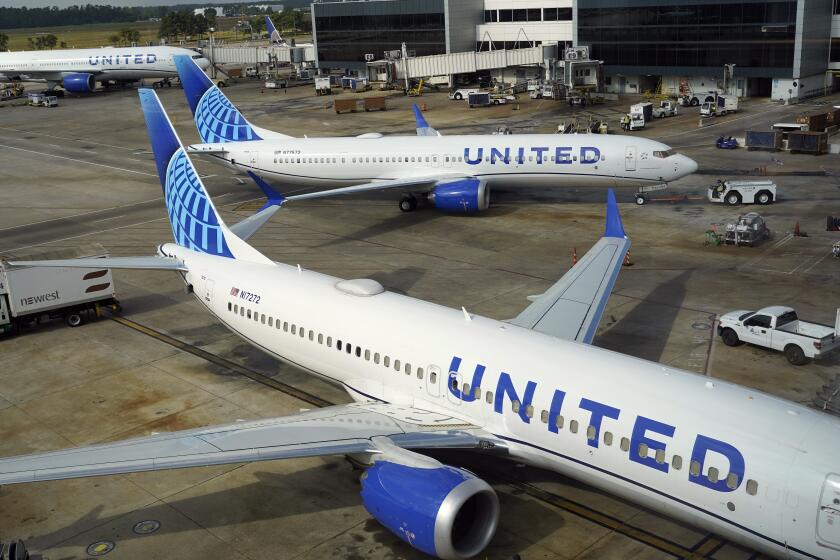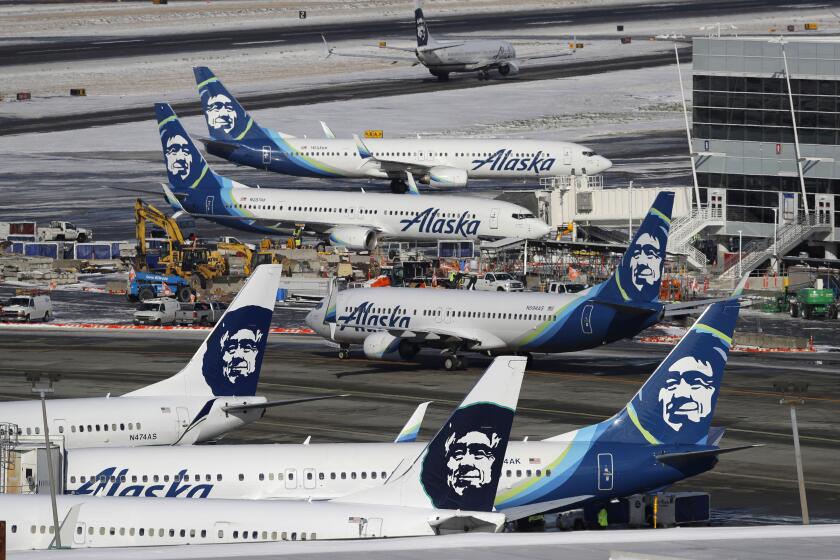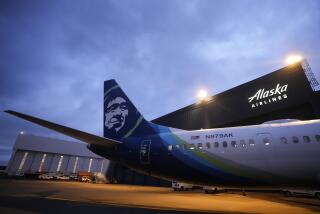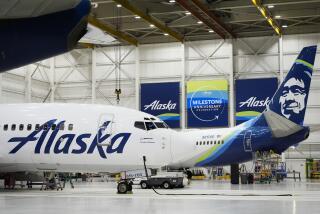Bolts that should have kept Alaska Airlines flight’s door plug in place are missing
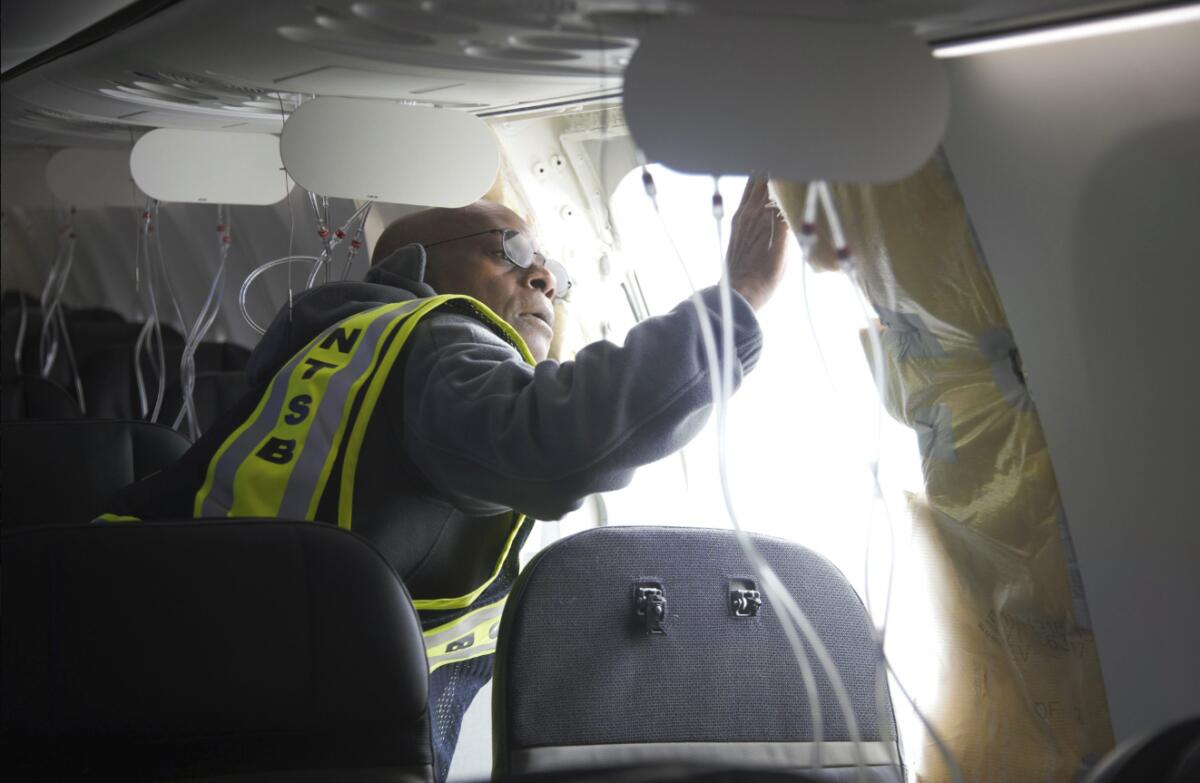
Four bolts meant to keep the door plug on a Boeing 737 Max 9 from shifting up, then blowing wide open during flight are missing, and investigators are trying to determine what role, if any, they played in the frightening midair episode over Portland, Ore., last week.
Minutes after Alaska Airlines Flight 1282 departed Portland International Airport for Ontario on Friday, the plane’s left door plug, which fills in an additional emergency exit that Alaska was not using in its modified layout of the 737 Max 9, blew open at 16,000 feet.
The National Transportation Safety Board is still investigating what caused the hole to burst open in the side of the plane, but during a Monday night news conference, officials said they had yet to find the four bolts meant to keep the door in place.
It’s not clear whether that means the bolts were missing before the flight or if they somehow were broken off, said NTSB Chair Jennifer Homendy.
The missing bolts are the same hardware that Alaska and United airlines on Monday reported were found loose in some of their 737 Max 9 jets during inspections after all the aircraft were grounded following the incident.
What’s a ‘door plug’ and why do airliners have them? How does a smartphone still work after falling three miles? We have answers to these and other questions stemming from Alaska Flight 1282.
“We have not yet recovered the four bolts that restrict [the door] from its vertical movement, and we have not yet determined if they existed there,” Clint Crookshanks, an NTSB investigator, said at the Monday night news conference.
The NTSB is in the process of transporting the door plug, which was found by a Portland teacher in his backyard, to its laboratory in Washington, D.C., where investigators are hoping to determine whether the hardware was in place before the flight.
“We will be able to determine if the bolts were there,” Homendy said.
The revelation comes after the Federal Aviation Administration on Saturday issued an emergency airworthiness directive to all airlines with 737 Max 9 aircraft in their fleet, grounding the planes “until the airplane is inspected and all applicable corrective actions have been performed.”
Alaska and United both reported finding “loose hardware” and bolts.
According to Flightradar24, an industry tracking firm, five airlines worldwide have 189 of the 737 Max 9 jets that use mid-cabin exit door plugs like the one on Flight 1282. United Airlines is the largest operator of the plane, with 79 jets. Alaska Airlines operates 65.
Copa Airlines, Aeromexico and Turkish Airlines also have the jet in their fleets.
Alaska and United airlines have found problems with door plugs on their Boeing 737 Max 9 jets after the blowout of the same piece of fuselage on an Alaska flight.
On Monday, Homendy said the NTSB was aware that other airlines had reported issues with the same bolts after inspecting their 737 Max 9 jets. Although the agency was “focused on this aircraft” and finding out what caused the door to blow open on Flight 1282, the agency would not rule out taking a wider look at the Boeing jets.
“We need to, first and foremost, figure out what happened with this aircraft,” she said. “If we have a bigger systemwide or fleet issue, we will issue an urgent safety recommendation or push for change.”
The NTSB has been collecting the information and is working with the FAA, she said.
Investigators say they believe the door moved upward and disengaged from 12 “stops” that keep it in place, before blowing wide open.
According to Crookshanks, there are a dozen stop pads on the airplane’s body that line up with 12 pins on the door plug when it is secured, keeping it from blowing open due to the difference in pressure inside and outside the cabin. The four missing bolts prevent the door from lifting out of its secured position.
Investigators also found that guide tracks on the door plug, which match up with guide rollers on the fuselage, were broken.
Cockpit audio from the Alaska Airlines flight that lost a chunk of fuselage was overwritten, the NTSB says. But an Oregon teacher found the door plug.
“Right now we’re focused on the evidence, and the evidence tells a story,” Homendy said. “The components on the door plug tell a story. We have to follow the evidence and see where it takes us before we jump to any sort of conclusions.”
On Tuesday, the FAA said every Boeing 737 Max 9 with a door plug would remain grounded until the agency determined they could safely return to service.
“We are staying in close contact with [federal inspectors] and will help address any and all findings,” Boeing said in a statement. “We are committed to ensuring every Boeing airplane meets design specifications and the highest safety and quality standards. We regret the impact this has had on our customers and their passengers.”
The FAA was also waiting on Boeing to provide instructions to operators to inspect and maintain the door plugs, according to a statement from the FAA.
An initial set of instructions was sent out by Boeing, but revised instructions were requested “because of feedback received” by operators, according to the FAA.
More to Read
Sign up for Essential California
The most important California stories and recommendations in your inbox every morning.
You may occasionally receive promotional content from the Los Angeles Times.
